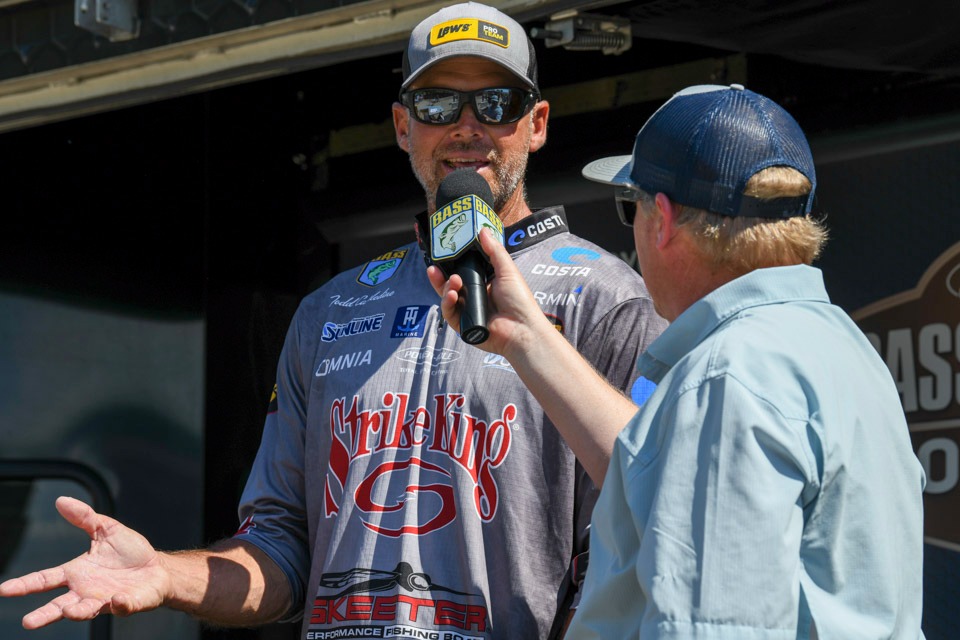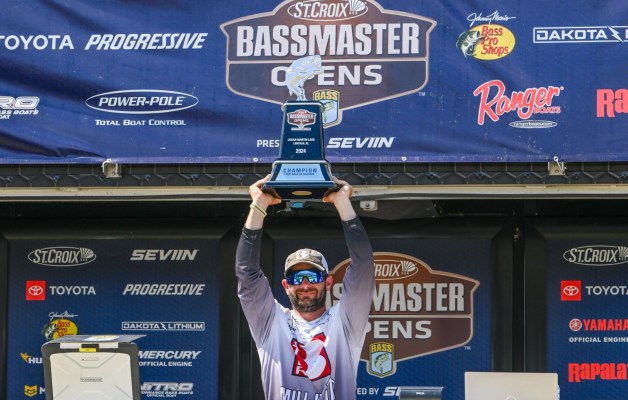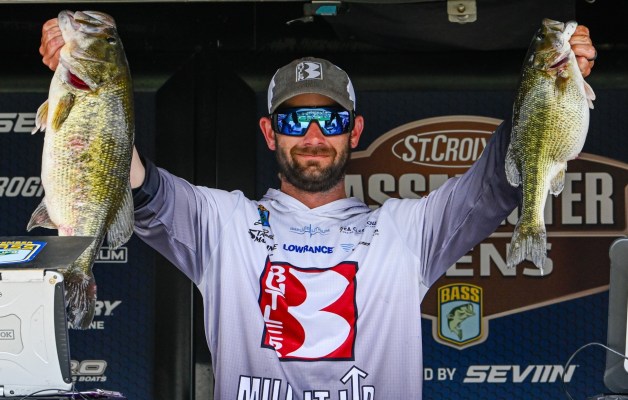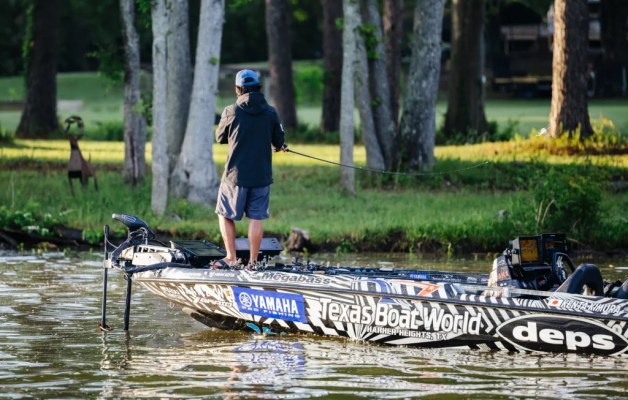
Editor’s note: Griffin Bierig is an aspiring journalist at Empower Academy in Chandler Texas, where he is a junior.
I first met Bassmaster Opens angler Todd Castledine at a hunting and fishing expo in Chandler, Texas. I didn’t quite fit in. However, when I heard about a seminar starting in the next 10 minutes, I thought it might be a nice place to sit for a while.
The longer I sat and listened to Castledine, the more intrigued I was by his words and the way he approached his craft. I knew I had to talk to him, so I waited for the seminar to end. When it did, I hopped up from my chair near the back of the room and beelined my way to the front so I could ask Castledine for an interview.
After a swift introduction, we exchanged contact information and I began to prepare for a Zoom meeting in the coming weeks. I started my conversation with Castledine by inquiring further into the topic of his aforementioned seminar, “Going Against the Grain.”
Bierig: It seems to me the core of your approach is to do the opposite of whatever your fellow competitors are doing in any given tournament. Would you say that’s correct?
“Sort of,” Castledine started. “Most of the time when you go to tournaments on these lakes, there is something (a technique or bait) that takes precedence over everything else. This pattern may win the tournament sometimes, too, but you’ll also see guys not do so great in tournaments following that pattern.”
He placed the blame for this on pressure on the lake generated through the practice days and multiday tournaments.
“Pressure in tournaments, I think, is probably the number one (thing we can’t predict), everything else we can predict. So I think pressure is the thing that affects the fish the most.”
To avoid this, Castledine said, “I’m always trying to find something that maybe is not as good but is trending upward, or stay the same while everyone else goes the other direction.”
Bierig: This got my wheels turning, and I decided to ask him about the process of discovering an “against the grain” technique.
“I always wanted to fish differently from everyone else. I was always trying to learn new things when I was a kid, like new techniques,” he said, relating a story about fishing Sam Rayburn. “Everyone always told me to throw a Rat-L-Trap in the grass during certain times of the year, and so when I did that I looked up after a year or two and saw I was catching fish but I was never getting close to winning. I went, ‘OK this isn’t working,’ so I started looking for different ways to catch ‘em.
“Then when I realized there were other ways no one was ever talking about and I had them all to myself I was going, ‘Well this is way better.’ And so that’s when I started doing a lot better in tournaments. I started applying these things to other lakes.”
Bierig: One thing you seemed passionate about in your seminar is sort of disdain for LiveScope, but a fascinating thing you said was, and I quote, “I don’t think there should be 16 charts on a boat.” However, you make your money fishing, so in my mind if 16 charts means you catch more bass shouldn’t you be all for that?
Castledine made it very clear that he does not have a disdain for LiveScope and he thinks it’s a great tool. He then went talked about the start of his career. “I didn’t have a boat. I didn’t have money for a boat. I used to save up money to go to the worm bar and buy bait.”
He said that if he was a kid now he’d have no chance because he could never afford LiveScope and therefore he’d be at a significant disadvantage. This viewpoint has caused Castledine to see himself as a sort of champion for the kids trying to make it without the financial advantage others have. He became passionate.
“A lot of people don’t want to say it, but there were a lot of guys that weren’t that great at fishing that are a lot better because of LiveScope, and if you took LiveScope away from them they would struggle. I don’t mind one LiveScope, but I’ve always said, ‘Where does it end?’ I don’t want to look up and see guys with four graphs on the front and back of their boat and think, ‘Hey this is what fishing is,’ while some 17-year-old kid is sitting there with one little graph saying, ‘Yeah man that’s not what this looks like for me.’” Castledine said that’s what worries him with LiveScope being allowed in lower-level competition.
Bierig: I wanted to use this interview as a platform for Castledine to give a message to the next generation, so I asked him: “You’ve had a pretty nice career thus far, and we can only expect you to continue on your own path. However there’s another generation of anglers coming up. Is there anything you’d want to tell them?
“I have thought about this in many different ways. We didn’t have high school fishing, and I always said I wouldn’t do high school or even college fishing. I don’t really know if that’s the right answer or not so what I’ll say is this: a lot of people ask, ‘What should I do in fishing?’
“My deal has always been to stay relevant. In some way stay relevant. Say I’m fishing on the Elites or the BPT, and I’m in the bottom 30 of all those events, then I’m not staying relevant. You can even be on the top, but if you’re not relevant then you’re not making money.” He said the best way to stay relevant is to be the top guy in your area whether that is a state, a region, a lake.
The final piece of advice Castledine had was to make your own platform.
“You look at guys like Ben Milliken (a YouTube star) he is more relevant and he’s never fished a professional event until this year (Bassmaster Opens EQ), and he’s more relevant than most of the guys fishing on the tour. You have to get in the fishing industry and be pretty good at what you do. I don’t mean kinda good, I mean really really good.”
Castledine summed up his thoughts in one last meaningful statement. “Stay relevant. Make sure you’re doing the right things, and you can make it in this industry.”




